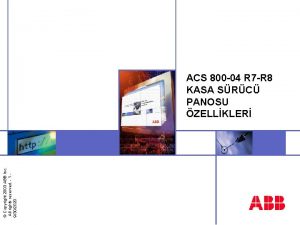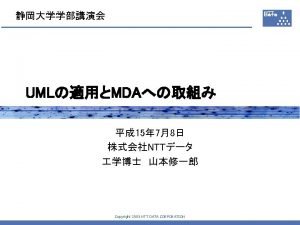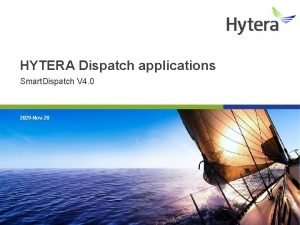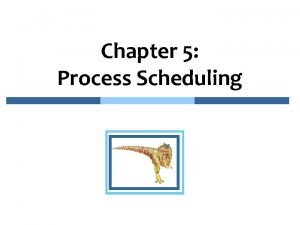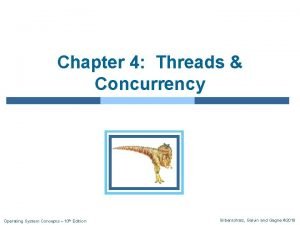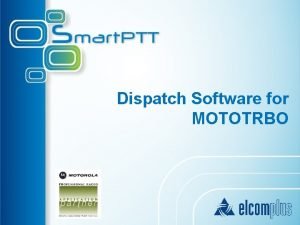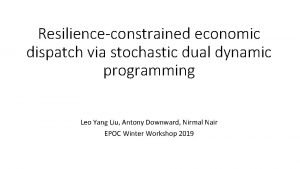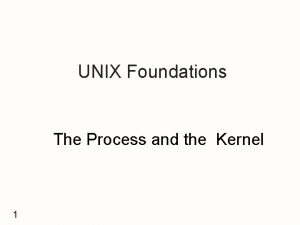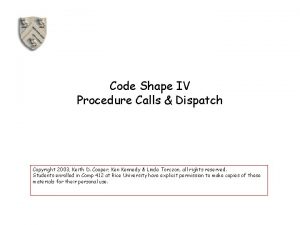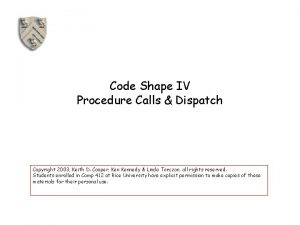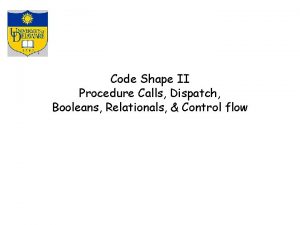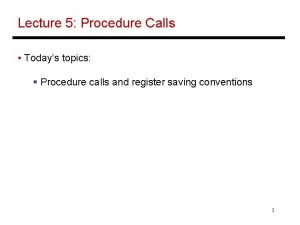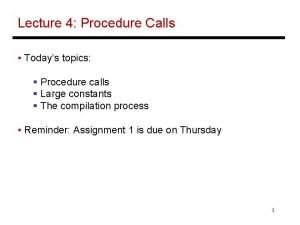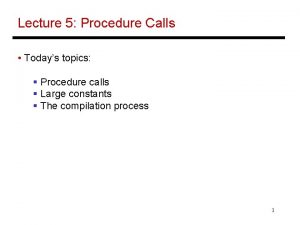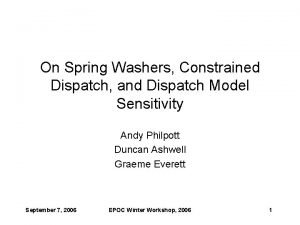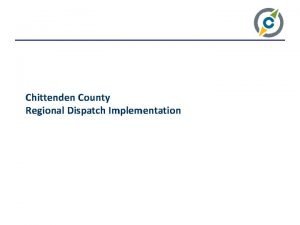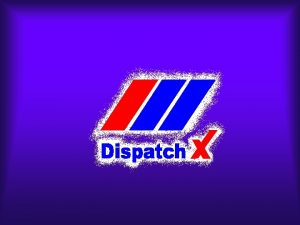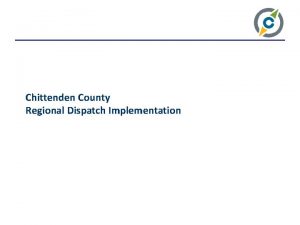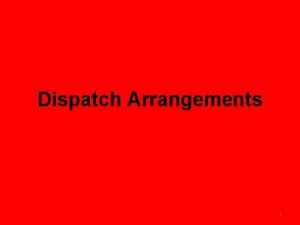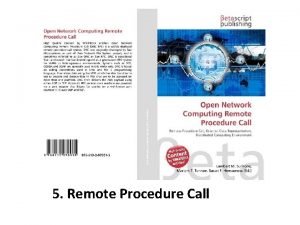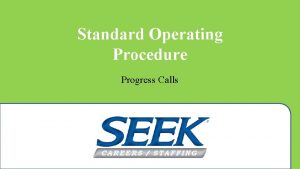Code Shape I Procedure Calls Dispatch Copyright 2003










![Implementing Procedure Calls What about A[12] as an actual parameter? If corresponding parameter is Implementing Procedure Calls What about A[12] as an actual parameter? If corresponding parameter is](https://slidetodoc.com/presentation_image_h2/b46e6428d784ec826612adb2ceaba6fe/image-11.jpg)







- Slides: 18

Code Shape I Procedure Calls & Dispatch Copyright 2003, Keith D. Cooper, Kennedy & Linda Torczon, all rights reserved.

Procedure Linkages Standard procedure linkage procedure p prolog procedure q prolog pre-call post-return epilog Procedure has • standard prolog • standard epilog Each call involves a • pre-call sequence • post-return sequence These are completely predictable from the call site depend on the number & type of the actual parameters

Implementing Procedure Calls If p calls q … • In the code for p, compiler emits pre-call sequence Evaluates each parameter & stores it appropriately ® Loads the return address from a label ® (with access links) sets up q ‘s access link ® Branches to the entry of q ® • In the code for p, compiler emits post-return sequence Copy return value into appropriate location ® Free q ‘s AR, if needed ® Resume p ‘s execution ® Invariant parts of pre-call sequence might be moved into the prolog

Implementing Procedure Calls If p calls q … • In the prolog, q must ® ® ® Set up its execution environment (with display) update the display entry for its lexical level Allocate space for its (AR &) local variables & initialize them If q calls other procedures, save the return address Establish addressability for static data area(s) • In the epilog, q must ® ® ® Store return value (unless “return” statement already did so) (with display) restore the display entry for its lexical level Restore the return address (if saved ) Begin restoring p ’s environment Load return address and branch to it

Implementing Procedure Calls If p calls q, one of them must • Preserve register values (caller-saves versus callee saves) Caller-saves registers stored/restored by p in p ‘s AR ® Callee-saves registers stored/restored by q in q ‘s AR ® • Allocate the AR Heap allocation callee allocates its own AR ® Stack allocation caller & callee cooperate to allocate AR ® Space tradeoff • Pre-call & post-return occur on every call • Prolog & epilog occur once per procedure • More calls than procedures ® Moving operations into prolog/epilog saves space

Implementing Procedure Calls If p calls q, one of them must • Preserve register values (caller-saves versus callee saves) If space is an issue • Moving code to prolog & epilog saves space • As register sets grow, save/restore code does, too Each saved register costs 2 operations ® Can use a library routine to save/restore ¨ Pass it a mask to determine actions & pointer to space ¨ Hardware support for save/restore or store. M/load. M ® Can decouple who saves from what is saved

Implementing Procedure Calls If p calls q, one of them must • Preserve register values (caller-saves versus callee saves) If space is an issue • All saves in prolog, all restores in epilog ® ® ® Caller provides a bit mask for caller-saves registers Callee provides a bit mask for callee-saves registers Store all of them in same AR (either caller or callee ) Efficient use of time and code space May waste some register save space in the AR • Caller-save & callee-save assign responsibility not work

Implementing Procedure Calls Evaluating parameters • Call by reference evaluate parameter to an lvalue • Call by value evaluate parameter to an rvalue & store it Aggregates, arrays, & strings are usually c-b-r • Language definition issues • Alternative is copying them at each procedure call Small structures can be passed in registers ® Can pass large c-b-v objects c-b-r and copy on modification ® AIX does this for C

Implementing Procedure Calls Evaluating parameters • Call by reference evaluate parameter to an lvalue • Call by value evaluate parameter to an rvalue & store it Procedure-valued parameters • Must pass starting address of procedure • With access links, need the lexical level as well Procedure value is a tuple < level, address > ¨ May also need shared data areas (file-level scopes ) ¨ In-file & out-of-file calls have (slightly ) different costs ® This lets the caller set up the appropriate access link ®

Implementing Procedure Calls What about arrays as actual parameters? Whole arrays, as call-by-reference parameters • Callee needs dimension information build a dope vector • Store the values in the calling sequence • Pass the address of the dope vector in the parameter slot • Generate complete address polynomial at each reference Some improvement is possible • Save leni and lowi rather than lowi and highi • Pre-compute the fixed terms in prologue sequence What about call-by-value? • Most c-b-v languages pass arrays by reference • This is a language design issue @A low 1 high 1 low 2 high 2
![Implementing Procedure Calls What about A12 as an actual parameter If corresponding parameter is Implementing Procedure Calls What about A[12] as an actual parameter? If corresponding parameter is](https://slidetodoc.com/presentation_image_h2/b46e6428d784ec826612adb2ceaba6fe/image-11.jpg)
Implementing Procedure Calls What about A[12] as an actual parameter? If corresponding parameter is a scalar, it’s easy • Pass the address or value, as needed • Must know about both formal & actual parameter • Language definition must force this interpretation What is corresponding parameter is an array? • Must know about both formal & actual parameter • Meaning must be well-defined and understood • Cross-procedural checking of conformability Again, we’re treading on language design issues

An Aside That Doesn’t Fit Well Anywhere … What about code for access to variable-sized arrays? Local arrays dimensioned by actual parameters • Same set of problems as parameter arrays • Requires dope vectors (or equivalent) ® Place dope vector at fixed offset in activation record Different access costs for textually similar references This presents lots of opportunities for a good optimizer • Common subexpressions in the address polynomial • Contents of dope vector are fixed during each activation • Should be able to recover much of the lost ground Handle them like parameter arrays

Implementing Procedure Calls What about a string-valued argument? • Call by reference pass a pointer to the start of the string ® Works with either length/contents or null-terminated string • Call by value copy the string & pass it Can store it in caller’s AR or callee’s AR ® Callee’s AR works well with stack-allocated ARs ® Can pass by reference & have callee copy it if necessary … ® Pointer functions as a “descriptor” for the string, stored in the appropriate location (register or slot in the AR)

Implementing Procedure Calls What about a structure-valued parameter? • Again, pass a descriptor • Call by reference descriptor (pointer) refers to original • Call by value create copy & pass its descriptor Can allocate it in either caller’s AR or callee’s AR ® Callee’s AR works well with stack-allocated ARs ® Can pass by reference & have callee copy it if necessary … ® If it is actually an array of structures, then use a dope vector If it is an element of an array of structures, then …

What About Calls in an OOL (Dispatch)? In an OOL, most calls are indirect calls • Compiled code does not contain address of callee Finds it by indirection through class’ method table ® Required to make subclass calls find right methods ® Code compiled in class C cannot know of subclass methods that override methods in C and C ‘s superclasses ® • In the general case, need dynamic dispatch Map method name to a search key ® Perform a run-time search through hierarchy ¨ Start with object’s class, search for 1 st occurrence of key ¨ This can be expensive ® Use a method cache to speed search How big? ¨ Cache holds < key, class, method pointer > Bigger more hits & longer search Smaller fewer hits, faster search ®

What About Calls in an OOL (Dispatch)? Improvements are possible in special cases • If class has no subclasses, can generate direct call ® Class structure must be static or class must be FINAL • If class structure is static Can generate complete method table for each class ® Single indirection through class pointer (1 or 2 operations) ® Keeps overhead at a low level ® • If class structure changes infrequently Build complete method tables at run time ® Initialization & any time class structure changes ® • If running program can create new classes, … ® Well, not all things can be done quickly

What About Calls in an OOL (Dispatch)? Unusual issues in OOL call • Need to pass receiver’s object record as (1 st) parameter ® Becomes self or this • Typical OOL has lexical scoping in method Limited to block-style scoping no need for access links ® Can overlay successive blocks in same method (reuse) ® • Method needs access to its class Object record has static pointer to superclass, and so on … ® Class pointers don’t need updating like access-links ® • Method is a full-fledged procedure It still needs an AR … ® Can often stack allocate them ® (Hot. Spot does …)

What About setjmp() and longjmp() ? Unix system calls to implement abnormal returns • Setjmp() stores a descriptor for use with longjmp() • Invoking longjump(d ) causes execution to continue at the point after the setjump() call that created d How can we implement setjmp() & longjmp() ? • Setjmp() must store ARP and return address in descriptor What about values of registers and variables? ® If they are to be preserved, must compute a closure ® • Longjmp() must restore environment at setjmp() ® Restore ARP & discard ARs creates since setjmp() ¨ Cheap with stack-allocated ARs, might cost more with heap
 Copyright 2003
Copyright 2003 2008 pearson education inc
2008 pearson education inc Copyright 2003
Copyright 2003 Copyright 2003
Copyright 2003 Code commit code build code deploy
Code commit code build code deploy Wildcad prescott
Wildcad prescott Ortec routing and dispatch
Ortec routing and dispatch Da 5988 example
Da 5988 example Smart dispatch software
Smart dispatch software Hotshot dispatching service
Hotshot dispatching service Dynamic method dispatch in java javatpoint
Dynamic method dispatch in java javatpoint Accessible dispatch
Accessible dispatch Windows process scheduling
Windows process scheduling Grand central dispatch linux
Grand central dispatch linux Mototrbo dispatch software
Mototrbo dispatch software Dispatch
Dispatch Central dispatch
Central dispatch Automated dispatch system
Automated dispatch system Uuuuu77
Uuuuu77
